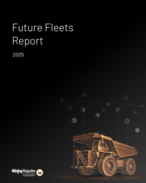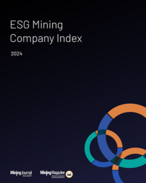This article is 17 years old. Images might not display.
Published in the May 2007 American Longwall Magazine
Researchers at the National Institute for Occupational Safety and Health (NIOSH) Pittsburgh Research Laboratory investigated one answer to incidents such as one that occurred earlier this year where a coal feeder swallowed a dozer and its driver into a literal black hole. While the operator fortunately survived, future incidents may be avoided by installing a remote control and vision system on the dozer.
A stockpile survey conducted by the Mine Safety and Health Administration throughout its 11 districts found that 19 workers had been killed due to stockpile dozer accidents since 1980, out of 464 dozers and 337 stockpile facilities. While the number by comparison to other areas of mining is small, there is no arguing that each of the 19 fatalities could have possibly been avoided.
Testing of a remote control system brought together the experts of NIOSH with one of the nation’s top dozer producers, Caterpillar, and coal producer Consol Energy.
Developments with the system included the installation of cameras, monitors, lighting, joysticks, manual override and radio controls. NIOSH researcher Bill Schiffbauer said the greatest challenges for it included developing reliable and efficient radio interfaces and determining the most effective placement of cameras.
Technology that was looked at for the system included panoramic video and audio, night vision, wireless interfaces, simulators and the construction of a central control room for the remote user.
Fast forward to 2007: NIOSH researchers have developed a Vision system to operate on a Caterpillar D10T dozer, which was most recently tested at Consol’s Eighty Four coal stockpile. The two companies have been consistently working together on the process.
Formally referred to as sensory technology, a panoramic camera on board gives a whole-area view of the dozer and its surroundings, plus four other cameras illustrate real-time occurrences at key points on the machine. Using a local area network and two radio links, a solid and comprehensive connection is kept to the human user in the control room with video.
The biggest issue with the Vision system, according to Schiffbauer, is that a camera is not an exact duplication of an actual worker’s view. NIOSH through testing realized that digital camera networks have inherent visual delays which are unacceptable from the operator’s point of view.
Another issue is something that may be hard to overcome – a human’s ability to sense his or her surroundings. “[The] operator needs a sense of dozer tilt and roll on the stockpile,” Schiffbauer noted, but added that a motion platform which echoes the dozer’s motion remotely might be the answer to that.
Moving forward, he said, efforts should concentrate on analog camera networks versus digital camera networks to minimize visual latency. Digital networks, however, can be used effectively for the radio control and sensor links since data throughput requirements are much less.
The researcher suggests isolation of the power used for the system from the other power options on the dozer unit, as well as sensory items including the motion platform, tilt-roll sensors, night/fog vision and off-board camera usage.























